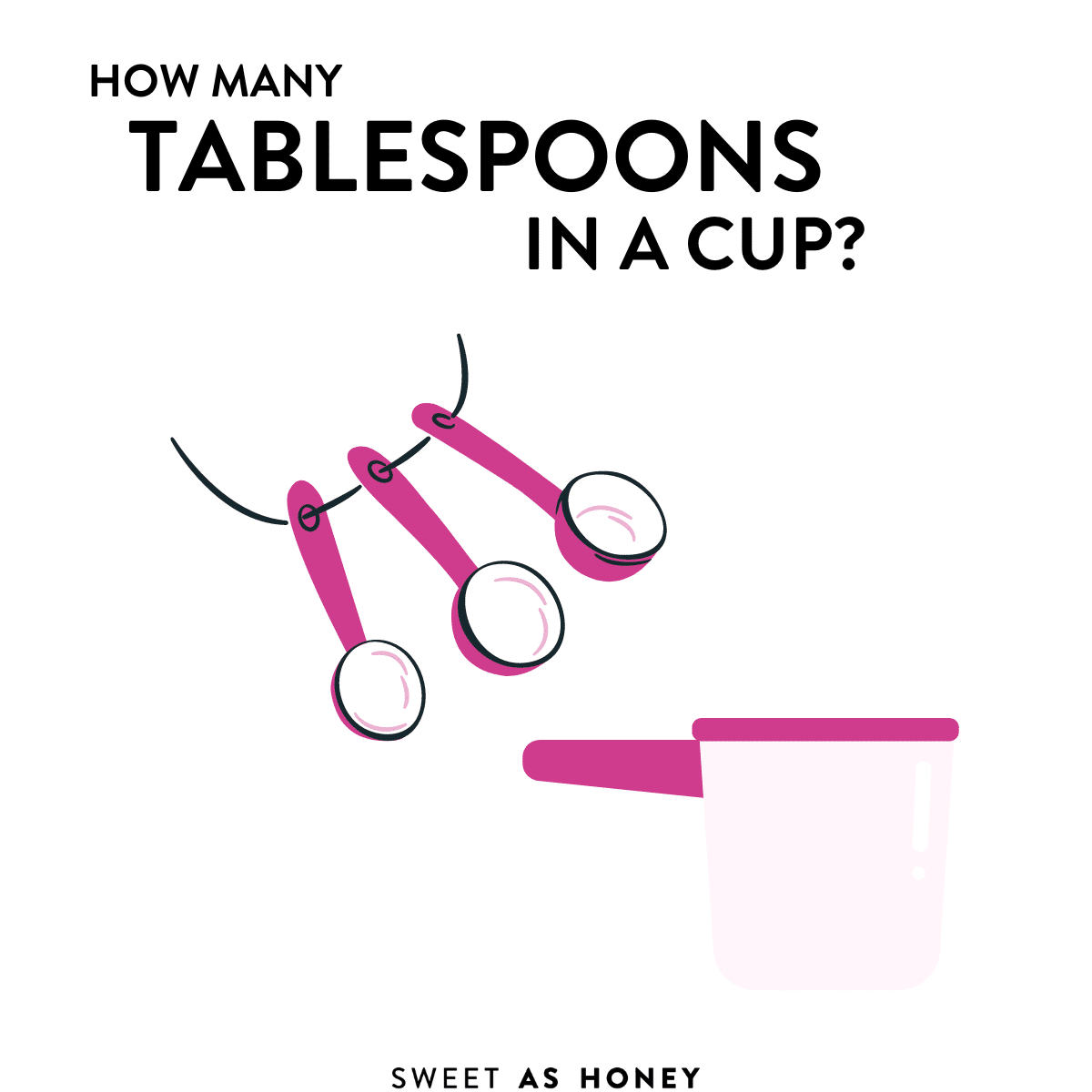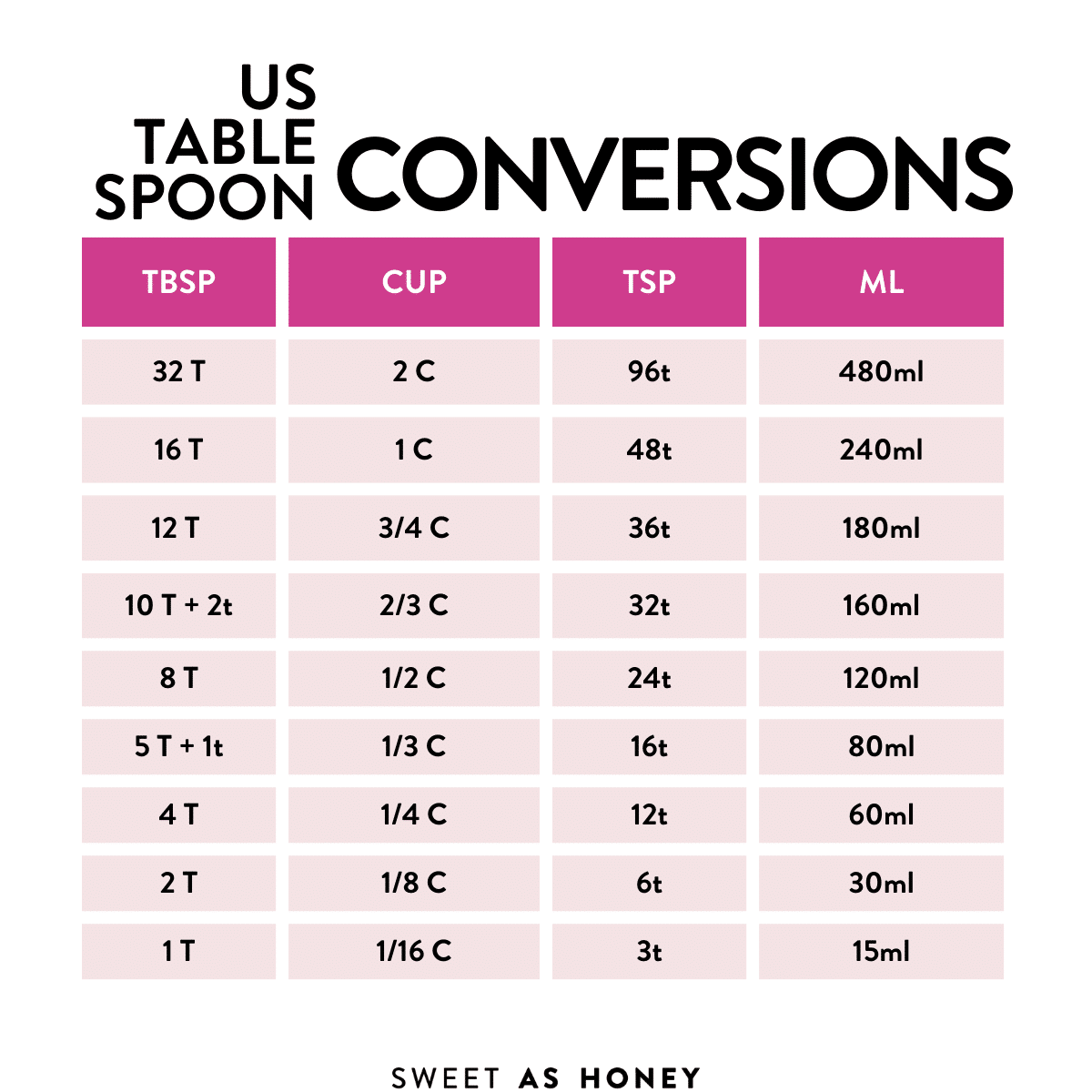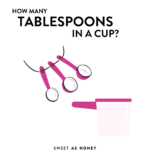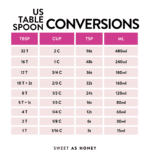How Many Tablespoons In A Cup?
This recipe may contain Amazon or other affiliate links. As an Amazon Associate I earn from qualifying purchases.
Cooking and baking can be an incredibly fun and rewarding activity, but it’s easy to become confused and frustrated when recipes use different measurement systems or units of measure.
For example, some recipes may call for a certain amount of ingredients in cups, while others may specify tablespoons. Knowing how many tablespoons are in a cup can be incredibly helpful for those who want to accurately measure ingredients and create delicious meals and desserts.

In this article, I will explore the question of how many tablespoons are in a cup in detail.
I’ll show you why it’s important to understand this conversion, what a tablespoon and a cup are, and some common ingredients that are often measured in tablespoons or cups.
Additionally, I will provide some tips and tricks for measuring ingredients accurately and efficiently.
Why It’s Important to Understand the Conversion of Tablespoons to Cups
Understanding how many tablespoons are in a cup is important for several reasons. Firstly, it helps to ensure that recipes turn out as expected.
Many recipes will specify ingredients in terms of tablespoons or cups, and using the wrong amount can result in a dish that is too dry, too wet, or simply not tasty.
Secondly, knowing how many tablespoons are in a cup can be useful when you need to scale recipes up or down.
For example, if you’re making a cake for a smaller group, you may need to halve the recipe, which will involve using smaller amounts of each ingredient.
By knowing the conversion of tablespoons to cups, you can easily adjust the amounts of ingredients you need.
Finally, understanding the conversion of tablespoons to cups can help to make cooking and baking more efficient.
Instead of constantly switching between tablespoons and cups, you can use the same measuring utensil for the entire recipe.

What Is A Tablespoon?
Before we discuss how many tablespoons are in a cup, let’s first define what a tablespoon is. A tablespoon is a unit of measure that is used to measure volume.
\It is abbreviated as “tbsp” or “T”, and is typically used to measure liquid or dry ingredients in cooking and baking.
One tablespoon is equal to three teaspoons, or 1/16th of a cup. In terms of volume, one tablespoon is approximately 15 milliliters (mL).
When measuring ingredients with a tablespoon, it’s important to use a level tablespoon to ensure accuracy.
What Is A Cup?
A cup is a unit of measure that is used to measure volume. It is abbreviated as “c”, and is typically used to measure liquid or dry ingredients in cooking and baking.
One cup is equal to 16 tablespoons, 48 teaspoons, or 8 fluid ounces.
When measuring ingredients with a cup, it’s important to use a measuring cup that is designed for liquid or dry ingredients.
Liquid measuring cups typically have a spout for pouring, while dry measuring cups are often shaped like small bowls and have a flat surface for leveling ingredients.
| US Cup | US Tablespoons |
|---|---|
| 4 Cups | 64 Tablespoons |
| 3 Cups | 48 Tablespoons |
| 2 Cups | 32 Tablespoons |
| 1 Cup | 16 Tablespoons |
| 3/4 Cup | 12 Tablespoons |
| 1/2 Cup | 8 Tablespoons |
| 1/4 Cup | 4 Tablespoons |
| 1/8 Cup | 2 Tablespoons |
| 1/16 Cup | 1 Tablespoon |
| 1/32 Cup | 1/2 Tablespoons |
Common Ingredients Measured In Tablespoons or Cups
Now that we understand what a tablespoon and a cup are, let’s explore some common ingredients that are often measured in tablespoons or cups.
Flour
Flour is often measured in cups. One cup of all-purpose flour is equal to 16 tablespoons or 48 teaspoons.
One cup of flour typically measures 125 grams.
Sugar
Sugar is also often measured in cups. One cup of granulated sugar measures about 150g.
Milk
Milk is typically measured in cups.
Since milk is liquid, one cup of milk is equal to 236mL, rounded up to 240mL.
Posted In:
Disclaimer
The recipes, instructions, and articles on this website should not be taken or used as medical advice. The nutritional data provided on Sweetashoney is to be used as indicative only. The nutrition data is calculated using WP Recipe Maker. Net Carbs is calculated by removing the fiber and some sweeteners from the total Carbohydrates.
You should always calculate the nutritional data yourself instead of relying on Sweetashoney's data. Sweetashoney and its recipes and articles are not intended to cure, prevent, diagnose, or treat any disease. Sweetashoney cannot be liable for adverse reactions or any other outcome resulting from the use of recipes or advice found on the Website.



Share this post!
If you enjoyed this post, share it with your close ones!
Leave a comment